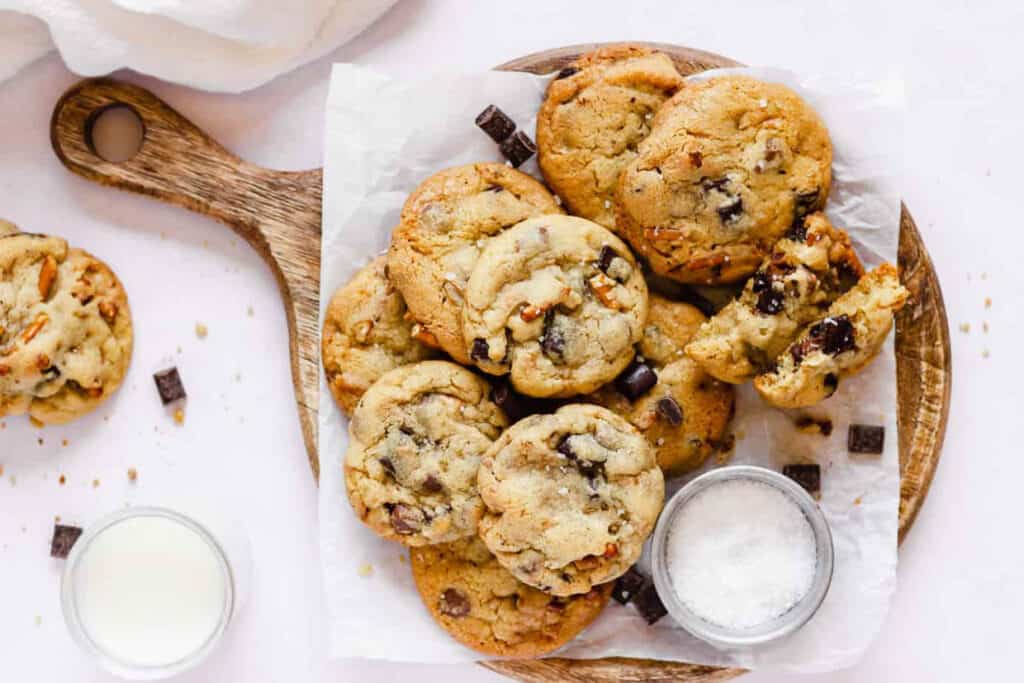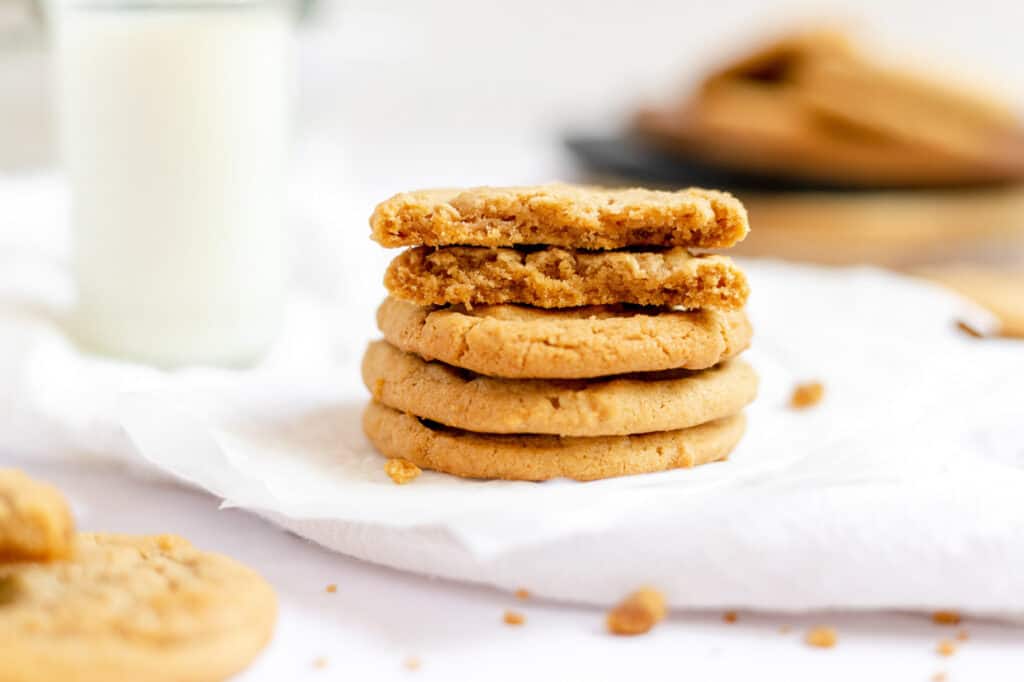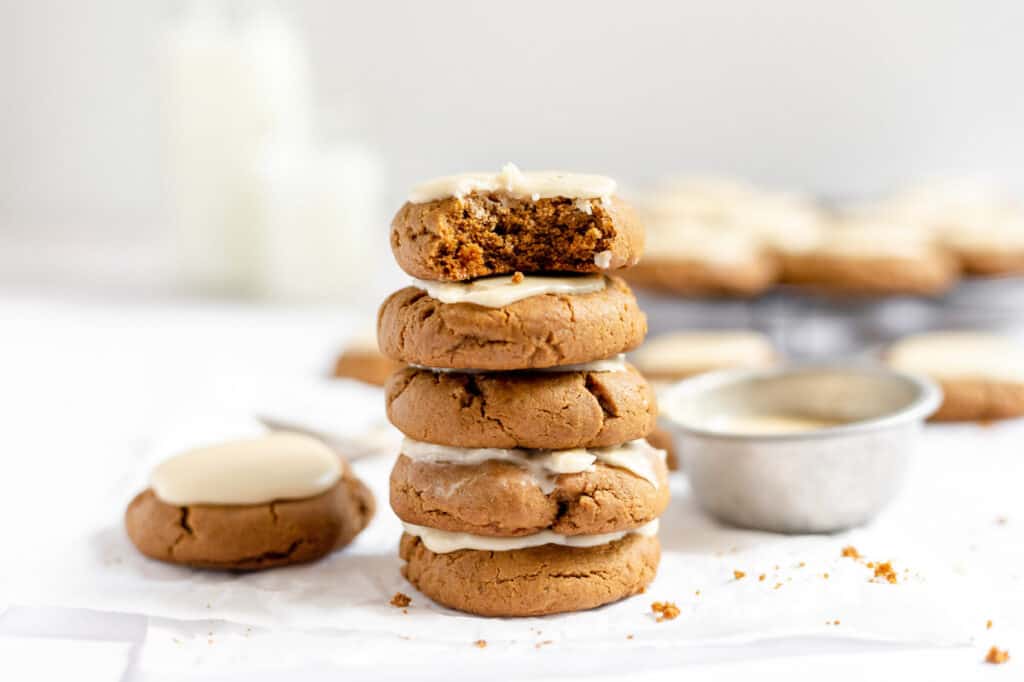Every baker has, at some point, encountered a situation where their favorite cookie recipe yields thin cookies instead of fluffy or thick ones. Many bakers often wonder, “Why are my cookies flat?” This post explores the most common reasons cookies may not rise as expected.

It’s common to have thin, flat and crispy cookies that don’t achieve the desired rise level. Even with a recipe you’ve made countless times before. Sometimes cookie dough doesn’t bake up how you want it to, and it may be for many reasons.
Discovery
First things first, is it a good, reliable cookie recipe? Has it produced acceptable results in the past? If this is a case of a one-time catastrophe, then assume it was either baker or tool failure.
If it’s an untested cookie recipe, check to see if it generally meets the common cookie dough ratios. It could also be a problem with the baker or the tools if it meets them.
If a cookie recipe doesn’t generally adhere to these ratios, it may indicate a poorly constructed cookie recipe. Such recipes can be found in various sources, including online and in cookbooks. Poorly written recipes may not be worth spending money on.
“Once, I subbed melted coconut oil for softened butter in the recipe, and my cookies came out as one big crispy cookie! Apparently, it’s recommended using the solidified version of coconut oil.”
— Gena, Ginger Casa

Why are my cookies flat, there are many reasons
Here are some of the standard baking mistakes that lead to flat cookies. These are user errors rather than ingredient failures.
- Ingredients mismeasured: This is a common mistake. Measure carefully or use a scale and a conversion tool.
- Your butter is too soft: Most cookie recipes call for room-temperature butter. If you go beyond that, the butter is too soft, making dough whipped full of air that eventually collapses during baking. Soften the butter, but not too much.
- Your butter is too hard: When the butter is too hard, it will not cream into the sugar. Proper creaming of cookie dough is integral to the perfect rise. If your butter is too hard, use these easy methods to soften it quickly.
- The dough is not chilled: Warm cookie dough will spread on cookie sheets. Most cookies bake better once chilled. Chill for at least 30 minutes.
- Using hot cookie sheets: If you’re putting cold cookie dough on hot cookie sheets, the dough will start to melt before it has a chance to actually bake. Cool your sheets between batches or use multiple sheets.
- Making the right size cookie: Are you using a cookie scoop? Make sure it’s the correct size, if you use more dough than called for, you may be underbaking your cookies.
FDL’S 75 Best Bites

Our cookbook with 75 tasty recipes will be your go-to kitchen companion for easy dinners with ad-free recipes right at your fingertips. Crafted by experienced chefs and recipe developers, this collection offers a treasure trove of tried-and-true dishes that make mealtime a breeze.
Get the Recipe: FDL’S 75 Best Bites

Here are some tools that can fail and make your cookies flat
It’s not always user error, sometimes the tools and ingredients are the problem. These are some common tools and ingredients that can occur to make your cookies flat.
- The baking soda is old: Old baking soda can be the culprit for flat cookies. A new box is an inexpensive fix. If your box is older than 6 months, it’s best to replace it. Check for efficacy by putting it in hot water with vinegar, if it bubbles, it’s good.
- Baking powder can also be old: It should be replaced if it’s older than 3 months. Test for efficacy by putting it in hot water, no vinegar is needed because it’s a mix of cream of tartar and baking soda. Cream of tartar is tartaric acid, which is why there’s no vinegar needed to test baking powder.
- Using natural brown sugar: Real brown sugar is made by adding molasses to white sugar. Molasses is acidic, and adds lift to your cookie dough. If you use products labeled natural brown sugar, chances are it’s just unrefined sugar that retains its brown color from not being processed. Use real brown sugar for the best results.
- Watching the temperature: Ovens can change over time. Use an oven thermometer to check the range’s internal temperature to ensure it’s heating up correctly. Adjust your baking temperature accordingly, or have your oven serviced.

Two more ideas
Here’s another thought to consider. Has anything changed that you’re not thinking of? Did you get a new oven, move to a higher elevation or switch flour or butter? Have you acquired new baking trays, silicone sheets or parchment paper? All of those can also affect how your tried and true recipe turns out.
Secondly, is it really a failure? Did you do something to make a crispy flat cookie that tasted amazing? Figure out what you did and replicate it. There is nothing wrong with liking what you like.
“Last year, I made my favorite recipe for snickerdoodles. I was short on time, and my sister swore up and down that she always makes hers with cold butter, so I tried it, and my cookies spread all over the place. I was devastated when I saw them, but they were soft in the middle with crispy edges, and I hope this year’s cookies end up exactly the same!”
— Renee Gardner, Renee Nicole’s Kitchen
Give that recipe another chance
Go through every possible option and narrow the problem to one probable cause so you can stop wondering, “Why are my cookies flat?” It’s time to bake your recipe again. As you work through the recipe, take notes if needed so that each step is documented. And if it fails again, reference the notes.
In the world of baking, even flat cookies have their place. Remember, every batch, whether thick or thin, teaches us something new. So, embrace the journey, keep experimenting, and let each batch of cookies be a stepping stone to becoming a better baker. And may you never ask, “Why are my cookies flat?” again.
Laura Sampson of Little House Big Alaska is on a mission to teach modern family-oriented home cooks how to make old-fashioned foods new again. She shares her passion for home cooking, backyard gardening and homesteading on her website and blog.